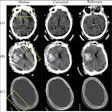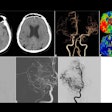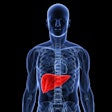The prevalence of up-to-date lung cancer screening with low-dose CT (LDCT) remains low -- especially in U.S. states that tend to have higher mortality rates of the disease, American Cancer Society (ACS) researchers have reported.
A team led by Priti Bandi, PhD, of the ACS in Atlanta, GA, found that overall, in 2022 only 18.1% of men and women eligible for lung cancer screening underwent it, despite a 2021 expansion of the pool of eligible individuals. It also found that lung cancer screening uptake varied across states, with a range of 9.7% to 31%. The study results were published June 10 in JAMA Internal Medicine.
"[We found that lung cancer screening] disparities were largest according to health care access and geographically across U.S. states, with low prevalence in southern states with high lung cancer burden," the group noted.
When the U.S. Preventive Services Task Force (USPSTF) updated its lung cancer screening guidance in 2021, it lowered the starting age from 55 to 50 and adjusted smoking history from 30 pack years to 20 pack years. The move was an effort to catch lung cancer earlier -- when it is more treatable -- and to address healthcare inequities, particularly differences among racial/ethnic groups and between men and women. But it has been unclear whether this recommendation change has actually translated to increased lung cancer screening, particularly at the state level.
Bandi and colleagues explored this question via a study that used data from the 2022 Behavioral Risk Factor Surveillance System (BRFSS). The study included information about 25,958 individuals between the ages of 50 and 79 eligible for the exam; of these, 61.5% were current smokers, 54.4% were men, 64.4% were 60 years or older, and 53% had a high school education or less. The researchers analyzed the data using adjusted prevalence ratios.
They found the following:
- Up-to-date lung cancer screening prevalence increased with age (50 to 54 years: 6.7%; 70 to 79 years: 27.1%) and number of comorbidities (equal to or less than 3: 24.6%; none: 8.7%).
- A total of 3.7% of those eligible individuals without insurance and 5.1% of those without a usual source of care were up-to-date with LCS.
- State-level Medicaid expansions were associated with higher up-to-date lung cancer screening prevalence (adjusted prevalence ratio, 2.68; 95%CI, 1.30-5.53), as was and higher screening capacity levels (high vs. low: adjusted prevalence ratio, 1.93).
| Top 10 states with highest lung cancer burden by age-adjusted mortality (per 100,000 individuals) | |
|---|---|
| State |
Mortality rate |
| Kentucky |
166.9 |
| West Virginia |
150.7 |
| Mississippi |
147.6 |
| Arkansas |
146.2 |
| Oklahoma |
140.3 |
| Alabama |
135 |
| Indiana |
133.3 |
| Missouri |
132 |
| Maine |
124.9 |
| North Carolina |
117.4 |
"The largest disparities in up-to-date lung cancer screening were according to health care access factors and across U.S. states, with state-level lung cancer screening discordant with lung cancer burden, particularly in high-burden southern states," the authors wrote. "Therefore, improving health care access for persons with low income through Medicaid expansion and increasing screening capacity may be associated with increased uptake and reduced disparities."
The study underscores that LDCT use for lung cancer screening is not solely related to patient preference, wrote Ilana Richman, MD, and Cary Gross, MD, both of Yale School of Medicine in New Haven, CT, in an invited commentary about the study.
"LDCT use was strongly associated with structural factors like Medicaid expansion and local availability of lung cancer screening," Richman and Gross wrote. "These findings indicate a suboptimal state of affairs in which access to lung cancer screening drives use rather than careful deliberation centering on a patient's unique history and values."
The complete study can be found here.




















